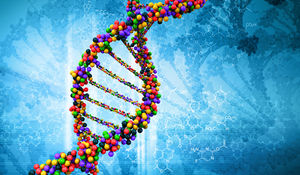Designed Genetic Coding

This is an article that deals with the concept of DNA Sequencing which is a topic in the realm of Genetic Science. This article will discuss, explain and recount the exact sequencing process utilized in the neo-natal process from initial conception to the point of delivery of a child including potential side effects and the point of current research and application within Sayaffallah.
History
RNA Strand Sequencing

In 1856 Leopold Ziegeiter, a prominent researcher and scientist in Sayaffallah discovered a prominent strand of RNA within the sequence of dioxyribosenucleic acid (DNA) that could be manipulated for small synthetic variations in its initial strand layers. By changing the quantity of adenineand cytosine within the nucleotide of DNA it was found that a 12 rather than 5 methyl cytosine strand was replicated and modified (12mC) because of the significant increase it was determined through the trial phase that it increased and enhanced the resiliency of the DNA strand from mutation in the later phases of conception and fetal development.
Ziegeiter was ecstatic at the discovery of this strand however the government at the time was less ecstatic and ordered Zeigeiter on pain of death to keep his discovery secret and to continue to develop new innovations and breakthroughs for the good of the country. The data was thus internally kept as a state secret and only shared on a need to know basis with scientists who were also researching the same topic and utilizing the exact same DNA strands that Ziegeiter was using in his experimental stages.
Genome Mapping
1862 brought new developments from the laboratory of Ziegeiter and his staff of now nearly 200 scientists sworn to secrecy and kept in luxurious surroundings of a mountain retreat known as Zatergast, the new developents were a complete mapping of the human genome specifically all of its strands and its sequencings as well as earlier cross referencing with the development of disorders and disease from the parents chromosomal exchanges during fertilization of the egg immediately after intercourse. The mapping of the genome was a huge accomplishment and allowed researchers to see the entire human genome in vivid detail and of course able to see which patterns and sequences led to which conditions and disorders and which ones accentuated the human individual either by increasing appearance or intellectual curiosity or athletic ability.
Researchers found that those in Sayaffallah who at the time had a higher disposition to attaining a disorder or disease or condition later in life were born with incredible abilities ranging from intellectual capacity to attractiveness. It was determined that these abilities were a survival mechanism occurring naturally in the body to help it survive future mutations of the genetic code. Researchers at this time came up with the Genome Survival Theorem which in short hypothesized that the genome was always constantly and rapidly changing and mutating over time as the body degraded and went beyond its peak abilities thus requiring a survival mechanism of either intellectual capacity, attractiveness or athletic ability as means of coping. Scientists observed that those who early on had a higher ability in these three key areas later contracted debilitating disease, disorder or condition that limited their overall functionality yet these abilities provided them with significant quality of life.
Fetal Stage Discovery
From 1875-1902 a study was conducted with the voluntary participation of 6550 parents and their children to monitor development both physical, social and academic of newborns throughout their span of life into adulthood. These children were taken to the Zatergast Resort in the mountains along with their parents and housed there for much of their childhood with frequent trips to the seaside and organized social outings and eventual transition into regular public school settings by age 13. The children were monitored with frequent blood examinations and genetic analysis to determine the progression of their particular assigned genetic traits from fetal stage through adulthood.
The discovery made by scientists was an earth shattering one on December 2, 1902 when their research revealed that the genetic growth of these participants ended at the point of birth with their particular genetic strand being locked in place with whatever changes would occur later in life and whatever conditions would develop already set in place. This meant that the Genome Survival Theorem was disproved and no longer applicable but it also meant that scientists could now focus exclusively on the point of development of the DNA strand during fetal stage and determine whether or not replicating, manipulating and changing the DNA strands during this process and prior to conception would result in significant changes later on in life.
A new study was commissioned and from 1903-1923 a new selection of 6500 parents and children were put through the same process except this time 500 of those participants were the reserve case in which nothing was done to alter the genetic makeup and thus became the marker by which all results would be measured. Researchers on the 6000 other cases altered the genetic sequencing during the point of conception from fertilization to a week before delivery and waited to see what result would take place among the children. The results achieved at the end in 1923 were phenomenal. The children who were given altered DNA restructuring and re-sequencing with their specific condition or future disease/disorder targeted were found to have those completely eliminated from their genetic code and instead their natural survival mechanisms were enhanced and heightened making them into what society identified as an ideal citizen. Of these children over 4 became future Prime Ministers of Sayaffallah and to this day the identity of those four remains a secret to the general public as the data has never been fully disclosed except to show the findings.